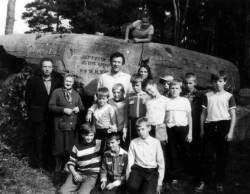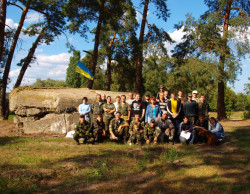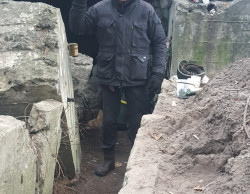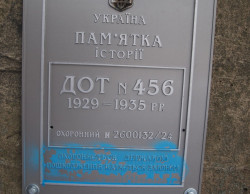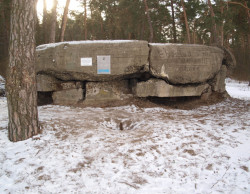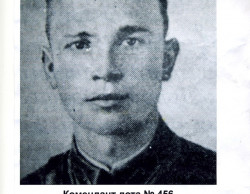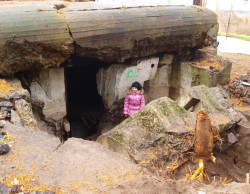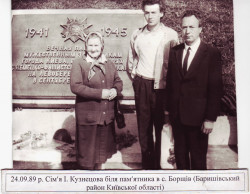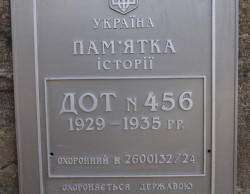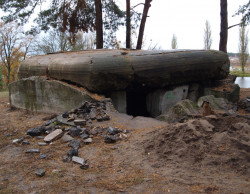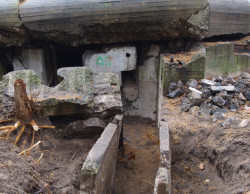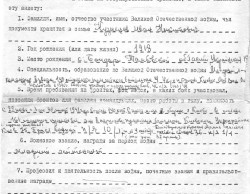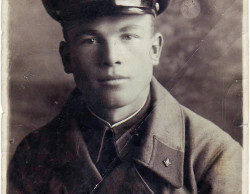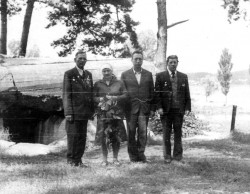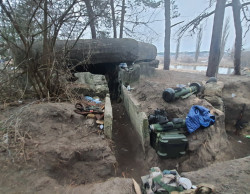Long-term fortification
- Головна >
- Long-term fortification









The development of defence structures kept pace with the improvement of weapons and tactics. In the era of piercing and throwing weapons, when combat operations were conducted in deep, closed formations, the basis of fortifications was fences, ramparts, and ditches, which made it difficult for the enemy to attack and assault. With the advent of firearms and linear tactics, redoubts appeared in the system of fortifications. With the increase in the power of small arms and artillery, the introduction of a loose formation and combat orders with reserves, the basis of fortified positions and strongholds began to be trenches (bastions, lodges, etc.), wood, earth and reinforced concrete structures (wooden shelters, long-term shelters). During the highly maneuverable actions of mechanized and tank troops, sets of industrialized defencive structures made of shaped and sheet steel and other materials are widely used.
Fortification is subdivided into field (military) and long-term fortification:
- Field (military) fortificationsare developed in accordance with the theory and practical recommendations for the fortification (usually in wartime) of positions, lanes, boundaries, starting areas, and areas of troop deploymentto support a battle (operation) plan. The discipline of fortification also deals with the construction of field structures to protect against the damage from various types of weapons.
- Long-term fortificationsare developed in accordance with the theory and practice of advanced fortification of the operation theater and the territory of the country (in peacetime and wartime).
According to their purpose, fortifications are divided into:
- structures for firing (trenches, trenches, etc.);
- observation and control structures (observation and command posts);
- structures for protection of personnel (crevices, dugouts, shelters), military equipment and material resources (pit shelters, closed shelters);
- communication shelters (communication passages, tunnels - galleries underground or inside the structure).
Previously, fortifications also included such types of artificial obstacles as ditches, escarpments, counter-escarpments, piles, and others, because they were integral elements of fortifications such as castles, fortresses, and forts. During the Second World War, artificial obstacles became an independent element of fortified positions called non-explosive barriers. Structurally, fortifications are divided into open and closed types. In open-type structures (slit, trench), protective constructions are not arranged along the entire contour and the entrance to those structures is not protected. Such structures reduce the radius of destruction by 1.5-2 times in the event of an nuclear munitionsexplosion, and also provide protection against bullets, shell fragments, mines, and air bombs.
In closed-type fortifications, protective structures are assembled along the entire contour of the construction, including the entrance. They provide the best protection against both conventional weapons and all the effects of nuclear weapons. With appropriate equipment, closed-type fortifications also provide protection against toxic agents and biological agents.
Long-term structures are built mainly in peacetime from durable and strong materials (reinforced concrete, armor, etc.). Such fortifications are equipped with energy and water supply, sewerage, and ventilation systems that ensure the possibility of long-term combat use.
After the Second World War, the improvement of fortifications was aimed primarily at reducing the time for their construction, reducing the weight of structures and increasing protective properties. The change in the nature of combat operations caused by the nuclear weapons developmentrequired a radical revision of the means and methods of fortifying positions and areas of troop deployment. The sharp reduction of the time provided for fortification equipment has required the development of fortifications that allow for mechanized construction and industrial production of structures. New types of industrialized fortifications made of reinforced concrete, corrugated steel, and synthetic materials with high protective properties, allowing the transportation along with troops, have emerged. For the protection of the population, structures equipped in the basements of residential buildings, factories, and plants are widely used.
During the Cold War, many countries planned to use tunnels, subways, mines, etc. for this purpose, with the expectation that people would stay in those structures for a long time in the conditions of radioactive contamination and massive fires.
During the Second World War, the dominant form of fortification was fortifications built by troops to support combat (operations) plan. The depth of positions and lanes in the defence was gradually increased, and rear operational and strategic defensive lines, as well as initial footholds for the offensive were equipped. In the deep rear, preparations were made for the defence of cities and large settlements, and fortification measures were taken to protect the population and facilities from enemy air strikes.
In the postwar period, due to the emergence of weapons of mass destruction, the tasks of fortification expanded and became more complex. In field fortifications, there are trends toward unification of structures, their construction from prefabricated industrial structures with maximum mechanization of work, and widespread use of earthmoving machines in equipping positions. In long-term fortifications, along with the development and implementation of new types of structures, monolithic and precast concrete structures remain important. In modern conditions, fortifications continue to play an important role in solving tactical, operational and strategic tasks.




